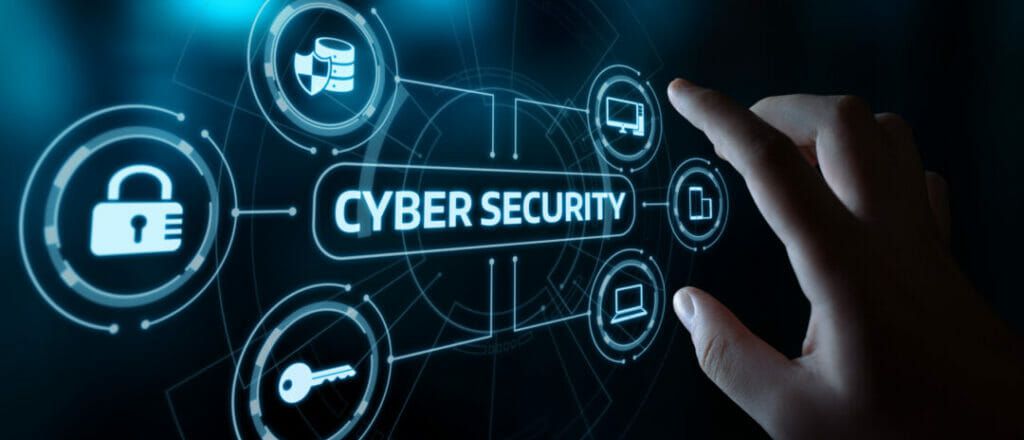
Written by - Rohit Kumar Grihi
Uploaded on - 20/03/2022
INTRODUCTION:
Cybersecurity is the protection of online applications such as computer hardware, software, and data from cyber threats. This practice is used by individuals and businesses to shield them from unauthorized access to data centers and other computer programs.
A strong cybersecurity strategy can offer a good level of protection against malicious attacks intended to access, modify, remove, destroy or defraud organizations or user systems and sensitive data. Cybersecurity also plays a key role in averting attacks aimed at disabling or disrupting the operation of a system or device.
WHY IS CYBER SECURITY IMPORTANT
With the growing number of users, devices, and programs in the current business, combined with an increase in data - many of which are sensitive or confidential - the standing of online security continues to grow. The rising volume and complexity of Internet attackers and attack strategies compound the problem even more.
FEATURES OF CYBER SECURITY AND HOW IT WORKS
The cybersecurity platform can be divided into several different categories, your contact with the organization is critical to the success of the online security system. These categories include the following:
- Application security
- Information or data security
- Network security
- Disaster recovery/business continuity
- Operational safety
- Cloud security
- Essential infrastructure security
- Physical protection
- End-user education
BENEFITS OF CYBER SECURITY
The benefits of using and maintaining cybersecurity processes include:
- Business protection from cyber-attacks and data breaches.
- Data protection and networks.
- Prevent unauthorized user access.
- Improved rest time after a break.
- Protection for end-users and endpoint devices
- Compliance and control.
- Business continuity.
- Improved trust in the company name and trust of engineers, partners, customers, stakeholders, and employees.
DIFFERENT TYPES OF SECURITY THREATS
The process of adapting to new technologies, security styles and risk intelligence is a daunting task. It is necessary to defend information and other assets from online threats, which may take many forms. Types of cyberthreat include:
- Computer malware is a type of malicious software where any file or program can be used to harm a computer user. This includes worms, viruses, Trojans, and spyware.
- Ransomware is another type of malicious program. It involves an attacker who locks the victim's computer system files - usually encrypted - and demands payment to remove encryption and open them.
- Social engineering is a human-based attack to trick users into violating security procedures to obtain sensitive information that is usually protected.
- Phishing is a category of social engineering where fake text messages similar to those from reputable or acquainted sources are sent. Often random attacks, the purpose of these messages is to steal sensitive data, such as a credit card or login information.
- Spear phishing is a kind of phishing, with the difference being a target user, organization, or business.
- Internal threats are security breaches or losses caused by people - for example, employees, contractors, or customers. Internal threats can be cruel or reckless.
- Distributed denial-of-service (DDoS) attacks are the ones where most systems disrupt targeted system traffic, such as a server, website, or other network service. By targeting the targeted with messages, connection requests, or packets, attackers can delay the system or crash it, preventing legitimate traffic from using it.
- Ongoing threats (APTs) are targeted for a long time - an attack where the attacker sneaks into the network and stays undetected to steal data.
- Man-in-the-middle (MitM) attack is an audible attack that involves an intruder invading and transmitting messages between two parties who believe they are communicating with each other.
TOP CHALLENGES OF CYBER SECURITY
Cybersecurity is constantly challenged by cybercriminals, data loss, privacy, risk management, and fluctuating cybersecurity strategies. The number of online attacks is not expected to decrease soon. In addition, an increase in invasive entry points, such as the advent of the Internet of Things (IoT), increases the need to protect networks and devices.
One of the biggest problems with cybersecurity is the emergence of a security risk environment. As new technologies emerge, and as technology is used in new or different ways, new attack methods are being developed. Adapting to these common changes and advances in attacks, as well as reviewing defense mechanisms in them, can be a challenge. Problems include ensuring that all aspects of cybersecurity are updated regularly to protect themselves from potential threats. This can be especially difficult for small organizations that do not have staff or internal resources.
USE AUTOMATION IS USED IN CYBERSECURITY
Automation has become a significant asset in keeping companies safe from the growing number and complexity of online risks. Using Artificial Intelligence (AI) and machine learning in high-volume data streams can help improve cybersecurity security in three key areas:
- Threat detection- AI forums can analyze data and detect known threats,
- Threat response- AI platforms also create and automatically act on security protections.
- Human Augmentation- Security experts are often bombarded with repeated warnings and activities. AI can help eliminate alert fatigue by automatically activating low-risk alarms and automatically automating big data and other repetitive tasks, freeing people to perform complex tasks.
Other automated benefits of cybersecurity include attack planning, malware detection, and more.
CYBERSECURITY VENDROS AND TOOLS
Vendors in the field of cybersecurity often provide a variety of security products and services. General defense tools and systems include:
- Ownership and access management (IAM)
- Firewalls
- Final point protection
- Antimalware
- Access / Detection Systems (IPS / IDS)
- Data Loss Prevention (DLP)
- Final point detection and response
- Security and event management information (SIEM)
- Encryption tools
- Risk scanners
- Visible private networks (VPNs)
- Cloud Compression Protection Forum (CWPP)
- Cloud access security broker (CASB)
- Well-known cybersecurity vendors include Check Point, Cisco, Code42, CrowdStrike, FireEye, Fortinet, IBM, Imperva, KnowBe4, McAfee, Microsoft, Palo Alto Networks, Rapid7, Splunk, Symantec, Trend Micro, and Trustwave.
JOB OPPORTUNITIES IN CYBERSECURITUES
As the cyber threat landscape continues to grow and new threats emerge - such as IoT threats - we need individuals with knowledge of online security and hardware and software capabilities.
- Graphic showcasing CISO authorities
- CISO activities are varied in upholding the business security of an enterprise.
IT professionals and other computer technicians are required in the security fields, such as:
- The chief information security officer (CISO) is the person who implements the security system throughout the organization and oversees the activities of the IT security department.
- The Central Security Office (CSO) is the company responsible for the physical security and/or cybersecurity of the company.
- Security engineers protect company assets from threats by focusing on quality control within IT infrastructure.
- Security architects are responsible for planning, analyzing, designing, testing, maintaining, and supporting critical business infrastructure.
- Security analysts have many responsibilities that include setting security measures and controls, protecting digital files, and conducting both internal and external security checks.
- Penetration testers are ethical hackers who check the security of systems, networks, and applications, looking for potential dangers which can be taken advantage of by malicious actors.
- Threat hunters are intimidating analysts who aim to expose weaknesses and attack and mitigate before they put a business at risk.
- Other cybersecurity actions include security advisers, data protection officers, cloud security architects, security operations managers (SOCs) administrators and analysts, security investigators, cryptographers, and security administrators.


